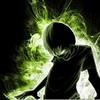Body Painting

Body painting is a form of body art, considered by some as the most ancient form of art. Unlike tattoo and other forms of body art, body painting is temporary, painted onto the human skin, and lasts for only several hours, or at most (in the case of Mehndi or "henna tattoo") a couple of weeks.
Traditional Body Painting
 Body painting with clay and other natural pigments existed in most, if not all, tribalist cultures, often worn during ceremonies; it still survives in this ancient form among the indigenous people of
Body painting with clay and other natural pigments existed in most, if not all, tribalist cultures, often worn during ceremonies; it still survives in this ancient form among the indigenous people of 

Indigenous peoples of South America traditionally use annatto, huito, or wet charcoal to decorate their face and body. Huito is semi-permanent and it generally takes weeks for this black dye to fade.
Actors and clowns around the world have painted their faces and sometimes bodies for centuries, and continue to do so today. More subdued form of face paints for everyday occasions evolve into the cosmetics we know today.
Actors and clowns around the world have painted their faces and sometimes bodies for centuries, and continue to do so today. More subdued form of face paints for everyday occasions evolve into the cosmetics we know today.


Modern Body Painting
There has been a revival of body painting in the Western society since the 1960s, in part prompted by the liberalization of social mores regarding nudity. Even today there is a constant debate about the legitimacy of body painting as an art form. The current modern revival could be said to date back to the 1933 World's Fair in Chicago

 Public, open-air body painting is common in
Public, open-air body painting is common in The corporal art today evolves to the works more directed towards personal mythologies, as Jana Sterbak, Rebecca Horn, Youri Messen-Jaschin or Javier Perez.
Body painting is not always full nude bodies. Body painting includes smaller designs on one area on the body.
Body Painting Festivals
Today body painting is huge in both amateur and professional arenas. Body painting festivals happen annually across the world bringing together professional body painters as well as keen amateurs. Body paintings can also typically be seen at football matches, at rave parties, and at certain festivals. The World Bodypainting Festival in Seeboden in Austria
 Artists from 40 nations worldwide come to this unique event and put body art into the mountain and lake scenery.
Artists from 40 nations worldwide come to this unique event and put body art into the mountain and lake scenery.
The Lake Millstätter See region's scenery is the stage, where bodies are boldly put on show, and each artist has the opportunity to show his/her own specialities - bodies painted with many different materials and techniques, and sometimes combined with the most fantastic costumes, masks and show effects.
 Artists from 40 nations worldwide come to this unique event and put body art into the mountain and lake scenery.
Artists from 40 nations worldwide come to this unique event and put body art into the mountain and lake scenery.The Lake Millstätter See region's scenery is the stage, where bodies are boldly put on show, and each artist has the opportunity to show his/her own specialities - bodies painted with many different materials and techniques, and sometimes combined with the most fantastic costumes, masks and show effects.
 The World Bodypainting Festival at Seeboden is the first of its kind in the world and has become the “Mecca of Bodypainting”. The world champions are chosen in the 3 main categories Brush/Sponge, Airbrush and Special Effects, as well as in one special category, the night contest for UV effects.
The World Bodypainting Festival at Seeboden is the first of its kind in the world and has become the “Mecca of Bodypainting”. The world champions are chosen in the 3 main categories Brush/Sponge, Airbrush and Special Effects, as well as in one special category, the night contest for UV effects.


0 Comments:
Post a Comment
Subscribe to Post Comments [Atom]
<< Home